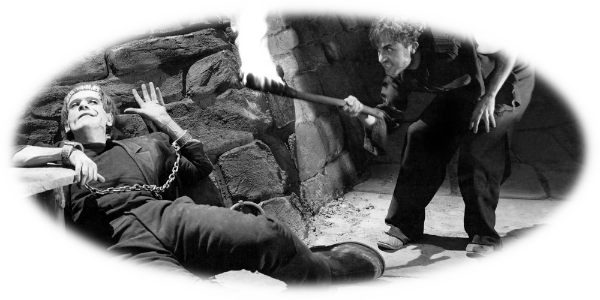

HIS HUMBLE HUNCHBACK: THE STOCK CHARACTER HISTORY OF IGOR
May 13, 2019 | Essays
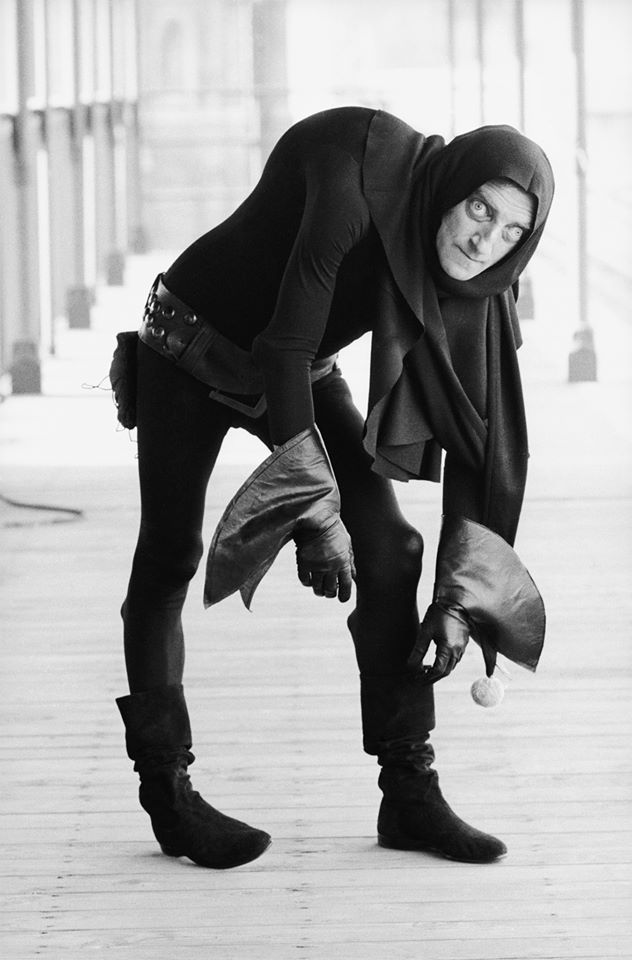
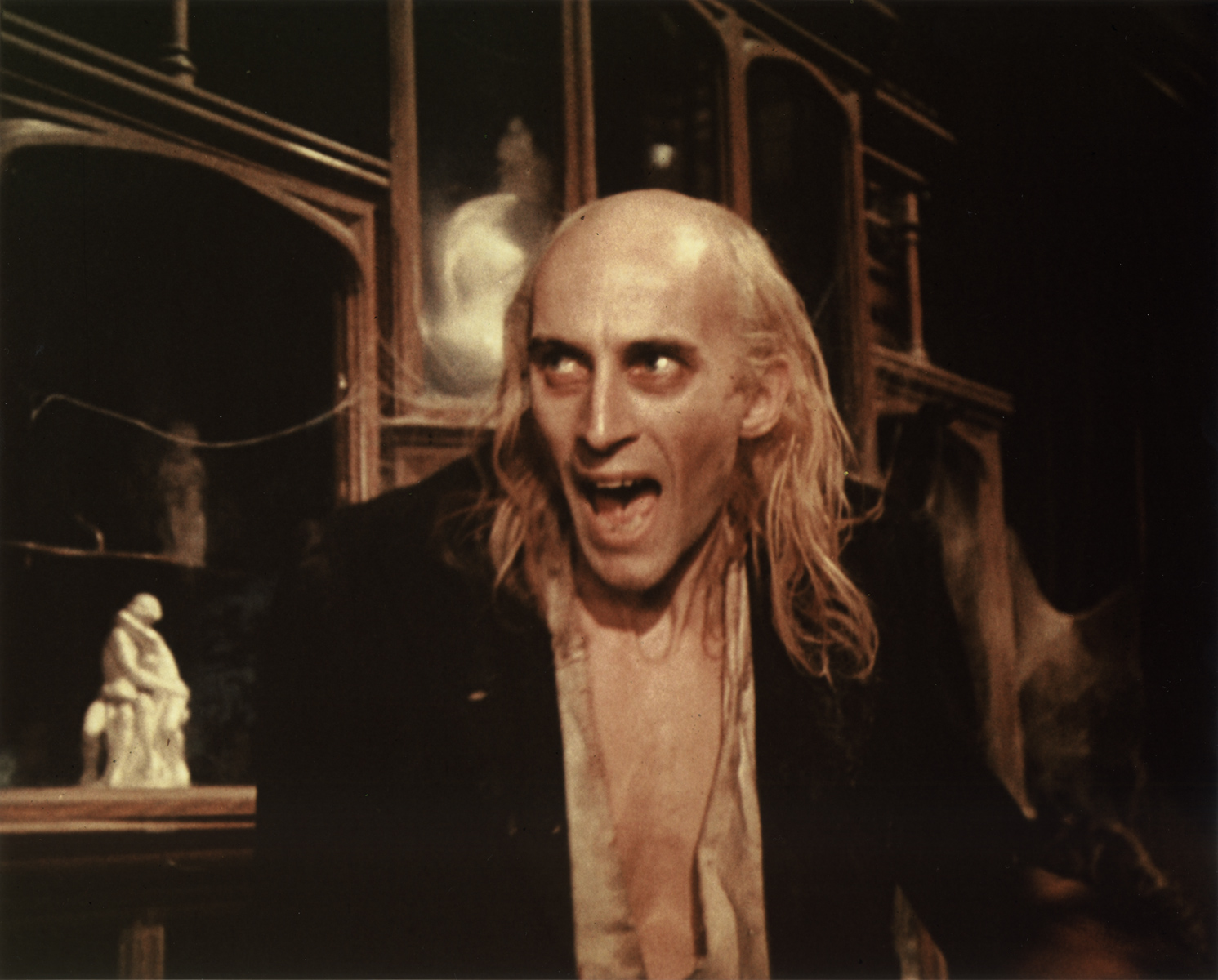
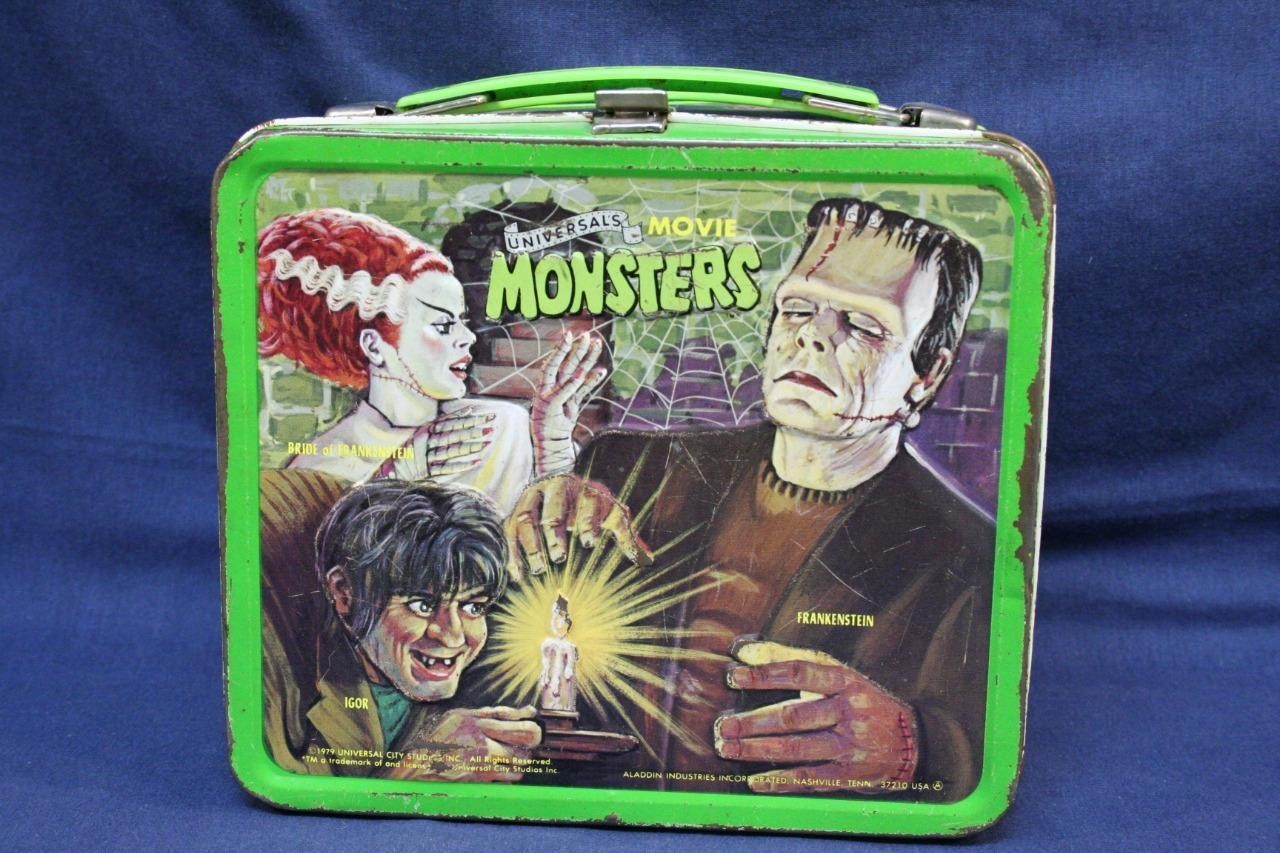
Our survey of "Igors" and hunchbacks throughout horror history has covered the earliest dramatizations of Mary Shelley’s novel, the Universal and Hammer Frankenstein films, horror hosts and novelty artists of the 50s and 60s, and parodies a-plenty from the early 70s. In 1974, however, Mel Brooks and Gene Wilder—both hot off of Blazing Saddles—teamed up again to make Young Frankenstein, the end-all be-all of horror parodies and a critical and commercial smash hit. Young Frankenstein didn’t just parody Universal horror but paid dear and earnest tribute to its legacy while still lampooning its electrodes off. Furthermore, it was by virtue of being a parody that Young Frankenstein was finally able to merge all of horror's helping hands into one suitably subservient and spectacularly iconic amalgam.
This quirky "Igor," played by Marty Feldman, took the best aspects of early parodic hunchbacks and performed them masterfully. It was an original take on a purposefully derivative character: Feldman’s Igor (or "eye-gor," as it’s quickly joked) is a hunchbacked assistant to Wilder’s Dr. Frederick Frankenstein. The film explains that Igor is actually the grandson of the "original" Igor, who helped the original Dr. Frankenstein make his monster. This is the first time that the blurry shadow of the long-forming stock character archetype was finally put into focus, and for a parody as successful as Young Frankenstein, this was not without its consequences. It fed the idea to audiences that there had always been one specific Igor alongside the doctor, when as repeatedly outlined here, that was not the case. Feldman’s portrayal marked a point of no return for the Frankenstein mythology—when something is parodied enough times, or is parodied very well and very popularly, the collective cultural consciousness begins to confuse the parody with the source material. While The Hilarious House of Frightenstein and friends may have gotten the ball rolling on parodies of "Igor", it was Young Frankenstein’s Igor that distilled the essence of its inspirations while being remarkably iconic in its own right. So powerful was the affirmation of these parodies of "Igor" in the collective cultural consciousness of Frankenstein that after 1974, Igor may as well have been in Mary Shelley’s original novel.
The Rocky Horror Picture Show, a satirical tribute to 50s sci-fi B-movies, premiered one year after Young Frankenstein in 1975 (although it was adapted from a stage show which actually opened one year before Young Frankenstein). Loosely based on the Frankenstein mythology, Rocky Horror faithfully features a doctor, Frank-N-Furter, and an assistant, Riff Raff, played by Tim Curry and Richard O’Brien (who also wrote the show and screenplay) respectively. Riff Raff, a hunchbacked "handyman," eventually betrays Dr. Frank-N-Furter much like how Ygor betrayed Wolf Frankenstein in Son of Frankenstein. Even in the most outlandish of Frankenstein parodies, the core key elements and their inspirations shine through—even the elements that have been totally made up, like the "Igor".
The Rocky Horror Picture Show, though considerably much more abstract of a Frankenstein film than Young Frankenstein before it, marked the beginning of a ten year dearth in Frankenstein films. Hammer Studios, which began producing Frankenstein films in 1955, released their seventh and final franchise entry Frankenstein and the Monster From Hell the same year as Young Frankenstein. The reason for the post-‘74 slump may actually be tied to Young Frankenstein’s success: it lampooned everything about Frankenstein movies so fully and so perfectly that any straight adaptation made immediately afterwards would have drowned in the inevitable comparisons. However, the Frankenstein parodies of the 70s and their insistence on having an "Igor" necessitated that something had to happen with the actual source material at some point. As thoroughly assessed, "Igor" characters have been a staple of adaptations since their earliest dramatizations, but the actual name Igor was an almost purely secondhand invention attributable to comedians, novelty artists, and television parodies. Inevitably after Young Frankenstein, the first hunchback named Igor would finally appear with the monster in an official, non-parody Frankenstein piece, licensed by the legendary Universal, no less: a lunchbox.
In 1979, in conjunction with Aladdin manufacturers, Universal released a lunchbox depicting all of their famous monsters: Dracula, the Wolfman, the Phantom of the Opera, and of course, Frankenstein’s monster (credited as just "Frankenstein") and his bride. Joining the monogamous monsters isn’t the doctor, but the hunchback: filthy, scraggly, and literally holding a candle to heavyweight horrors (like the top-billed hunchbacks of Universal’s crossovers), an "Igor" played straight finally appears. The depicted hunchback bears a strong resemblance to Fritz from 1931’s Frankenstein but is not entirely dissimilar to the brutish Ygor from Son of Frankenstein. Through sheer persistence and constant reinvention and reference, "Igor" had joined other signifiers like Gothic scenery, gloomy castles, and torch-wielding mobs as tools (if not necessities) in any parody of, homage, or reference to Frankenstein, like stars that combine to suggest the shape of a constellation. The monster, the doctor, and Igor now formed Orion’s belt.
Lunchboxes aside, Frankenstein films experienced a long and sparsely populated slump amidst a new era of horror where the graphic slasher reigned supreme. In the shadow of Young Frankenstein, filmmakers attempted to radically subvert the traditions of the franchise or reinvent the Frankenstein story entirely. The Bride was released in 1985, an original remake of 1935’s Bride of Frankenstein, and features a very brief, minor appearance by an "Igor" character named Paulus. It was followed five years later by the black comedy Frankenhooker in 1990, which also focuses on a female monster but lacks an "Igor" character entirely. Ultimately, both The Bride and Frankenhooker were critical bombs of cult status at best. Two more Frankenstein films emerged in the 90s: Frankenstein Unbound and Mary Shelley’s Frankenstein. These two films sought to adapt the novel differently than previous adaptations, and in emphasizing faithfulness, they excluded "Igor" characters altogether and portray Dr. Frankenstein as a solo scientist.
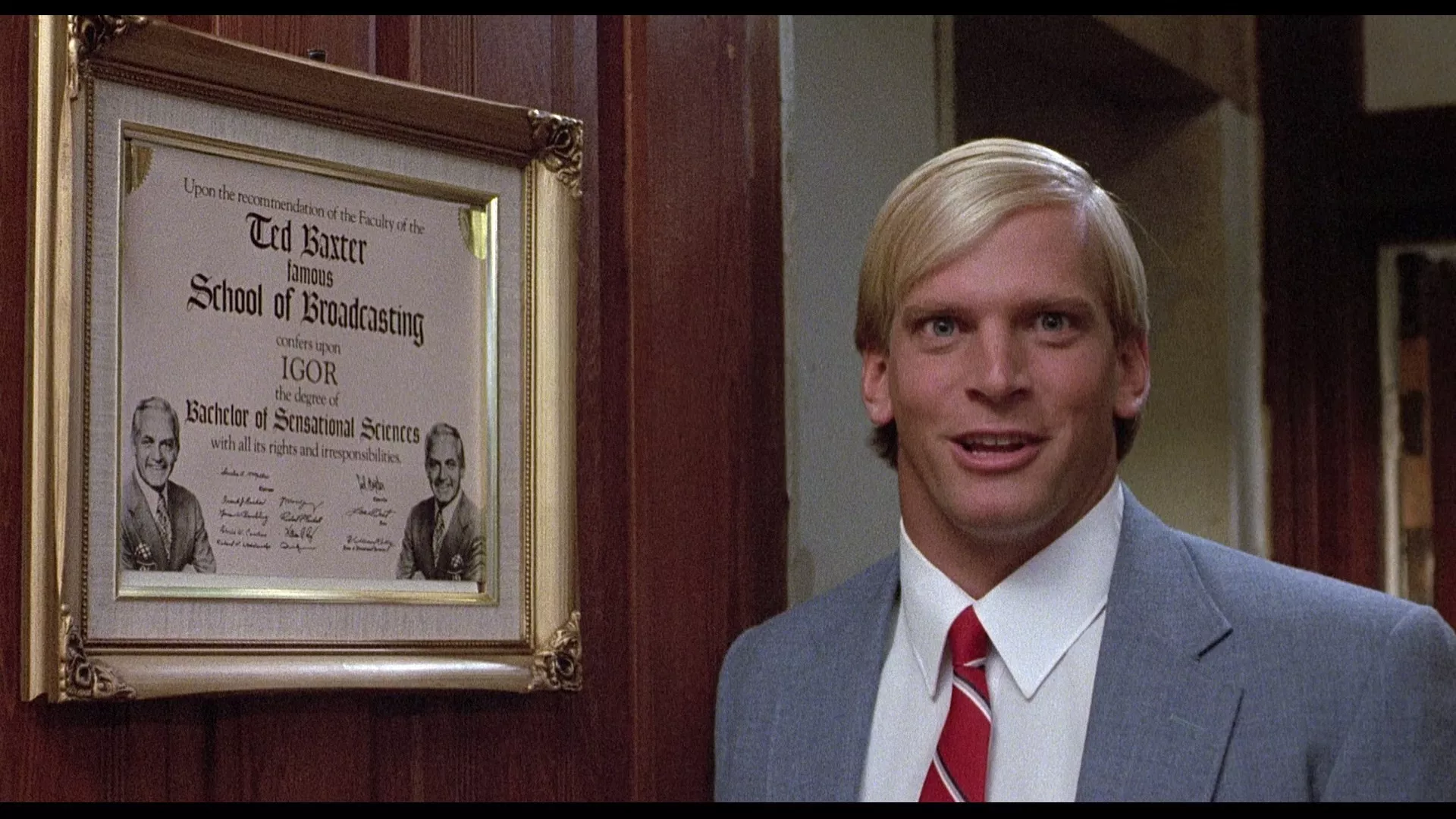
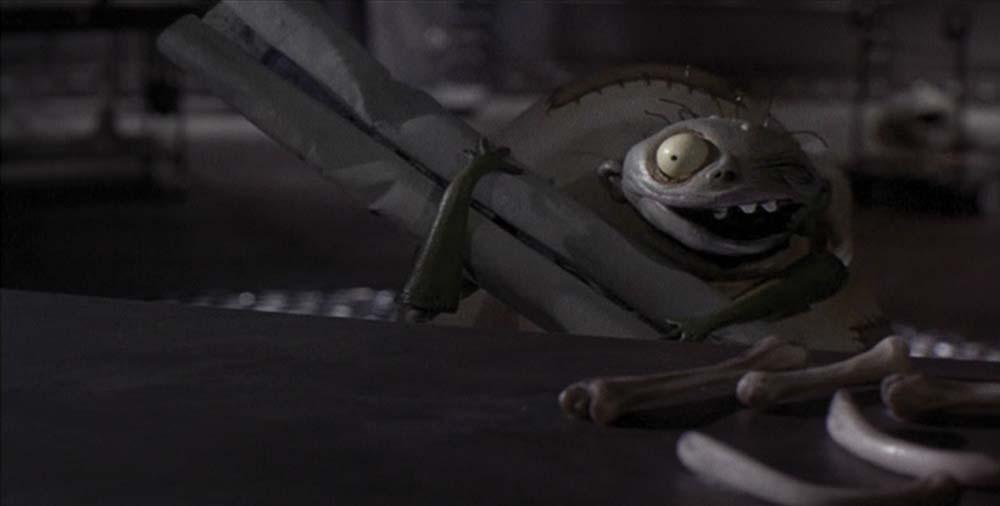
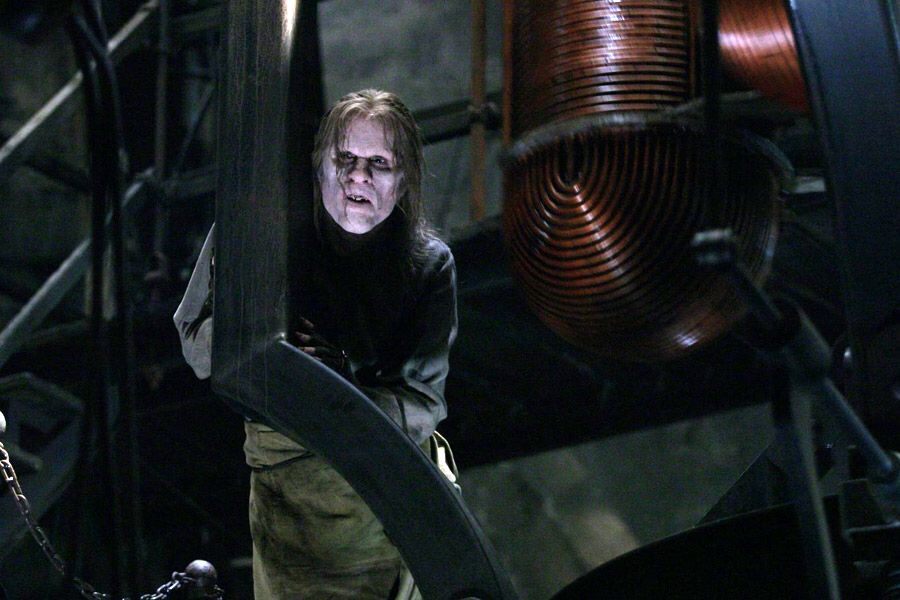
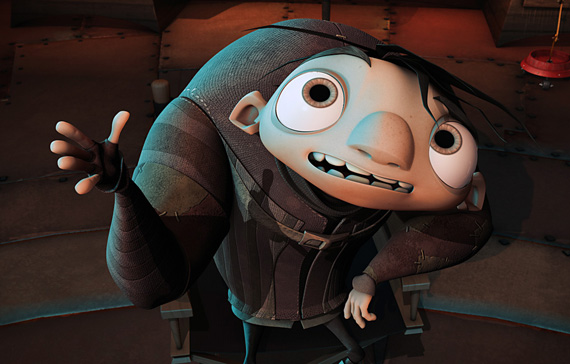
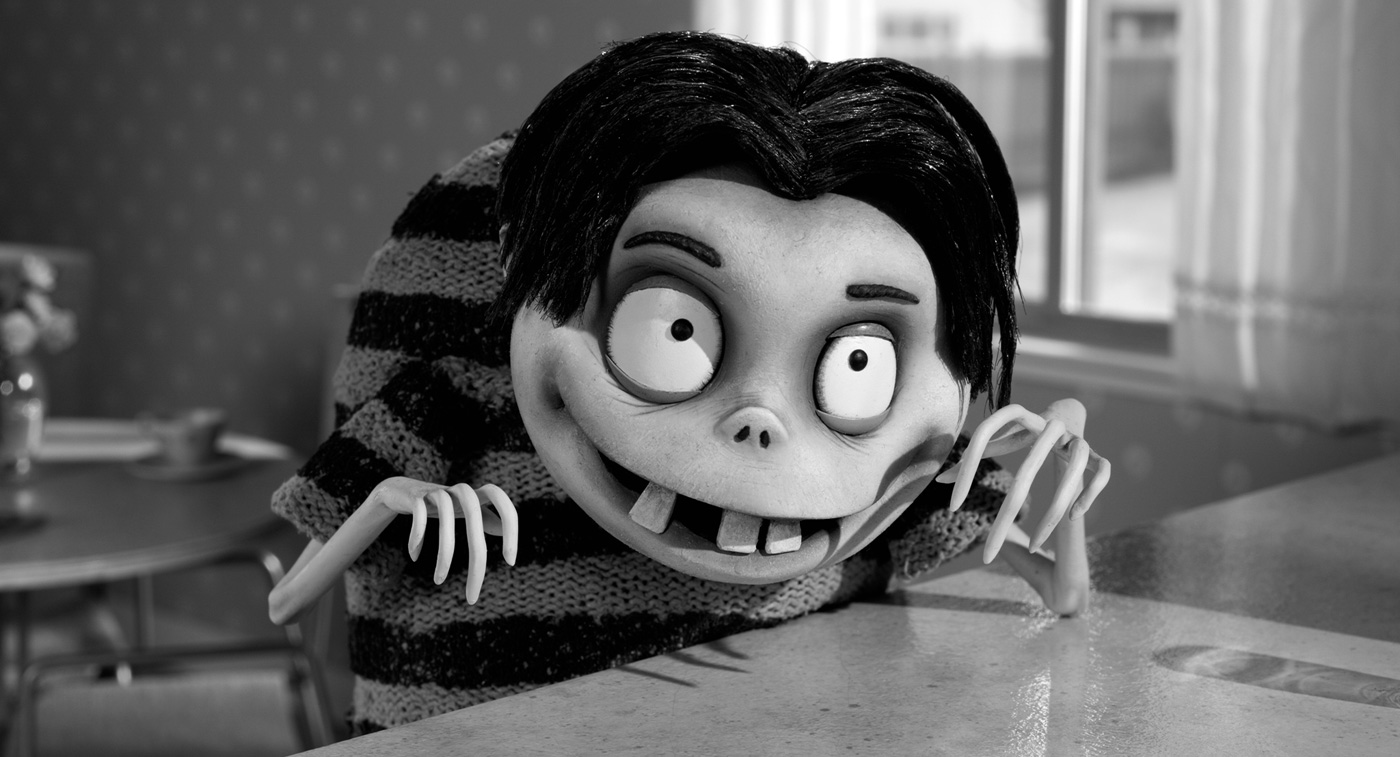
A non-Frankenstein film from this era worth mentioning is Return of the Killer Tomatoes!, the 1988 sequel to 1978 spoof Attack of the Killer Tomatoes. Return’s antagonist, the villainous professor Mortimer T. Gangreen, employs an assistant named Igor. However, in the wildest subversion of the "Igor" archetype yet, this Igor is played by the tall, handsome, and muscular Steve Lundquist. Lundquist’s portrayal is another great send-up of the archetype like Marty Feldman’s in Young Frankenstein, just one taken to the opposite extreme of not resembling the "Igor" archetype at all. Gangreen even scolds Igor for being so handsome as to make him look bad, and Igor replies "maybe if I walked with a hunch?"
The realization of the "Igor" character in Young Frankenstein cemented the character’s place in the horror pantheon; the scientist’s assistant was no longer a flexible role but a very specific and fully formed archetype that finally had a name. In that regard, the Frankenstein films of the late twentieth century were innovative because they excluded "Igor" characters. The novel's own depiction of Dr. Frankenstein alone had become a subversive concept. Regardless, there was still one more notable "Igor" in the 90s, in Henry Selick's 1993 The Nightmare Before Christmas. Taking place in the holiday world of Halloween Town, a mishmash of various monsters and horror movie clichés, Igor is an assistant to the obligatory mad scientist (and tertiary antagonist) Dr. Finklestein. Nightmare’s Igor was a grotesque and hideous fiend that seemed to draw inspiration from every notable "Igor" before it: the hunchback of Fritz from Frankenstein, the gait of Ygor from Son of Frankenstein, and the bulging eye of Marty Feldman. He was even green-skinned like Igor from The Hilarious House of Frightenstein, spoke with a Peter Lorre impression as seen previously on The Electric Company, and called Dr. Finklestein "master" like Renfield. As a finishing touch, he was extremely animalistic like the "Igor" from Jonathan Winters’s comedy records, catching thrown dog treats from Dr. Finklestein like a trained beast.
By the end of the 90s, the "Igor" archetype had taken significant evolutionary steps and was prominent enough to be officially recognized on a Universal lunchbox. Cinematically, though, he was still relegated to the world of parody and pastiche, a trend would continue into the 2000s. In the 2004 blockbuster Van Helsing, Kevin O’Connor plays the hunchbacked Igor, who works for Dr. Frankenstein and later Count Dracula alongside his werewolf henchman—a motley crew of creatures directly and deliberately echoing Universal’s monster rally films from the 40s. This Igor is also much more explicitly monstrous than his live-action predecessors; not just hunchbacked, O’Connor’s portrayal looks very ghoulish, with deathly pale skin and deeply sunken eyes to give off a skeletal appearance.
In 2008, the "Igor" archetype finally stepped out of the shadows and earned a film of its own: Igor, starring the voice of John Cusack, wherein it’s established that "Igors" are actually a class of citizen employed as servants by all mad scientists, and depicts the titular assistant trying to become a scientist in his own right after the death of his master, Dr. Glickenstein. The idea of "Igors" as a single specific class or race of people may have actually been inspired by the popular Discworld fantasy novels written by Terry Pratchett. First appearing in the twenty-third book Carpe Jugulum! in 1998, Pratchett’s Igors are natives of a region called Überwald, a geographic pastiche and parody of Gothic horror settings and clichés. All of the male Igors are named Igor, and all of the females are named Igorina (making Pratchett’s books the first medium to depict a female "Igor" since 1945’s House of Dracula). Both the 2008 film Igor and Pratchett’s novels posit a codified "master/servant" relationship in which Igors are innately subservient, like a caste system in which mad scientists rule, the logical extreme of the "Igor" archetype’s deferential nature.
Tim Burton’s 2012 Frankenweenie is another spooky parody about an adolescent Victor Frankenstein reanimating his dead dog. Frankenweenie features a young "Igor" in Victor’s bug-eyed and hunchbacked friend Edgar "E." Gore. Frankenweenie's cretinous-looking E. Gore is not too far a cry from Burton’s other Igor seen in The Nightmare Before Christmas nineteen years earlier, but E. Gore differs from that earlier Igor in that he speaks not with a Peter Lorre impression but with a sharper and generally more childlike voice.
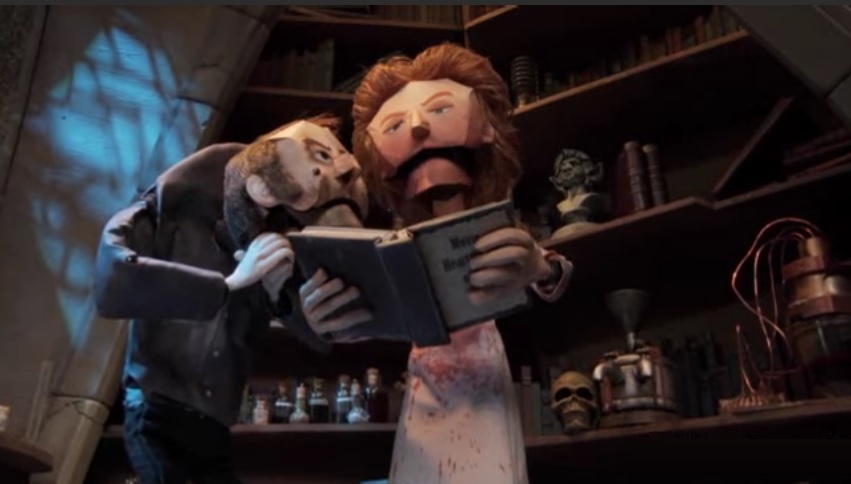
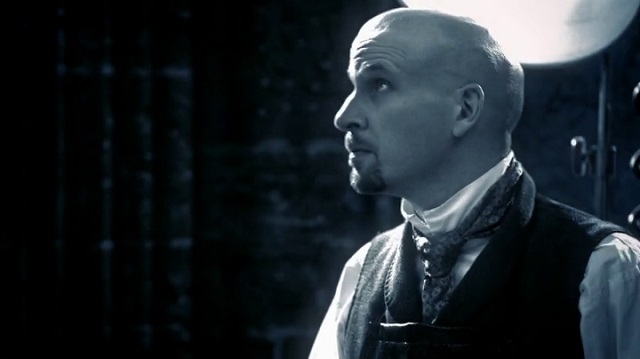
Despite experiencing a revival in the movies, "Igor" still appeared in television, too. Frankenstein has been parodied countless times in cartoons and sketch shows, but the 2010 adult animated comedy Mary Shelley’s Frankenhole was an entire show premised upon the mythology. Among other classic monsters like Dracula, the show featured a hunchbacked character named Igor who served as Dr. Frankenstein’s gofer, fetching body parts and running errands. This Igor (portrayed by Tigger Stamatopoulos) spoke with the voice of a raspy infant, and like other "Igors" before him, referred to Dr. Frankenstein as "master."
Igor, however, was not isolated to parody and would appear in the fantasy series Once Upon a Time as well, which featured various characters from fairy tales, folklore, and literature. Dr. Frankenstein first appears in the 2012 episode "The Doctor" with an assistant named Igor played by Kis Yurij. Although not hunchbacked, this particular inclusion of an "Igor" was unique given the show’s premise. The fictional characters on Once Upon a Time are supposedly from the world of their source material, so Dr. Frankenstein should be pulled from the world of the Mary Shelley novel and not inherently have an assistant. By giving this Dr. Frankenstein an assistant named Igor, it seemed to affirm the place of "Igor" alongside the doctor, suggesting that the mythology of the Frankenstein films and their impact on popular culture has transcended that of the novel, and that their characters, tropes, and clichés have become their own unique story.

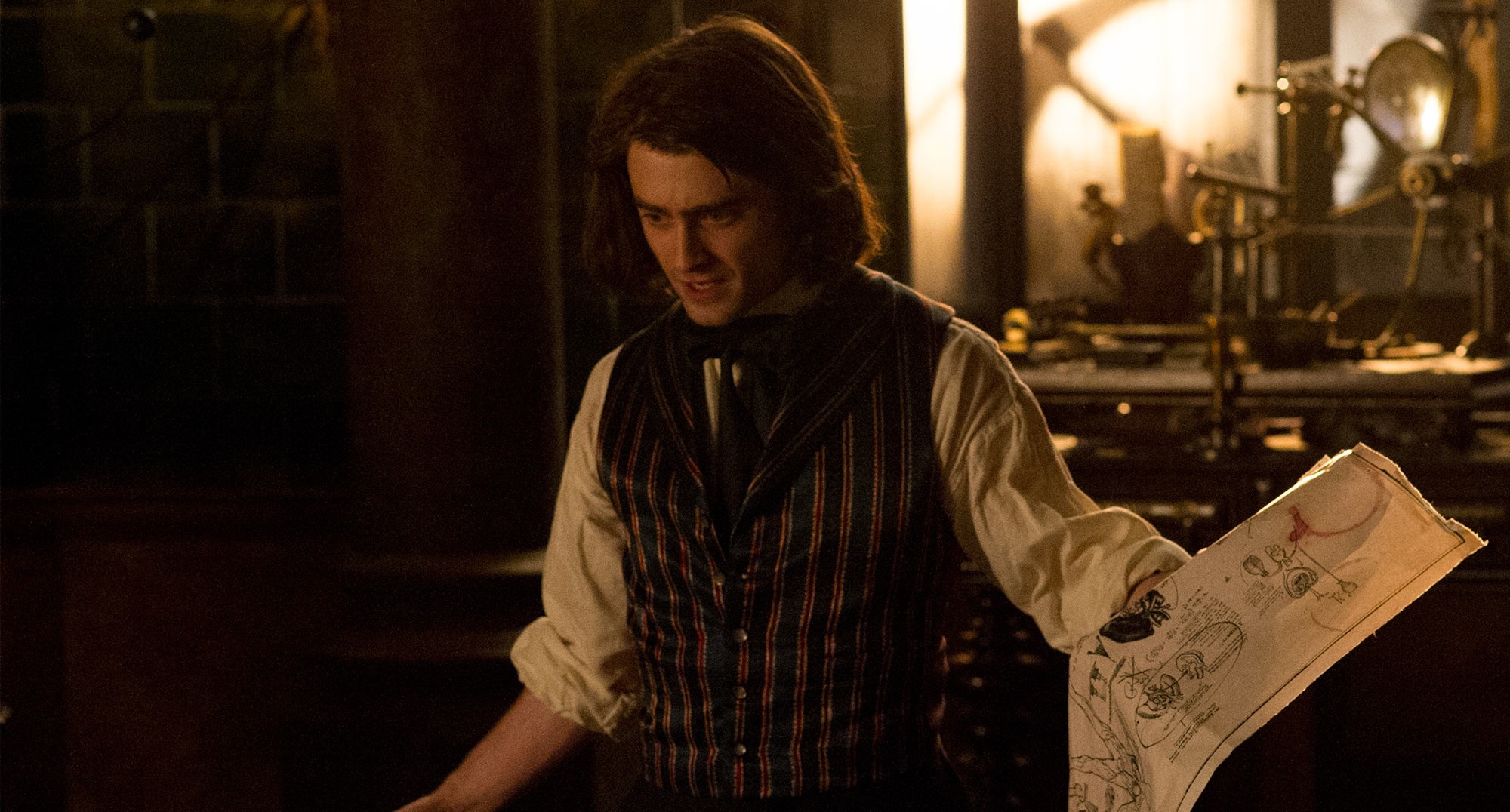
The persistence of "Igor" and its pervasiveness in popular culture meant that, much like the lunchbox from 1979, the character would have to show up in the proper Frankenstein canon at some point. Between 1931 and 2015, audiences had experienced 84 years of adaptations of the same story. Some of these films had "Igors" and some didn’t, but 2015’s Victor Frankenstein would be a watershed moment in Frankenstein's cinematic history. After decades of various assistants and hunchbacks, writer Max Landis and director Paul McGuigan would be the first to make a non-parody Frankenstein film with 1) a hunchback 2) who is an assistant to Dr. Frankenstein 3) named Igor. Furthermore, this Igor, brought to life by Daniel Radcliffe, is catapulted into the limelight as the film’s main protagonist, a far cry from the peripheral or antagonistic roles typical of "Igors" in the past. Despite being titled Victor Frankenstein, this is arguably Igor’s movie, depicting his experience working with the doctor and centering his perspective. At the start of the film, he is a hunchbacked circus member who gets discovered by Dr. Frankenstein while performing emergency surgery on an injured acrobat. The doctor, impressed by his medical knowledge, rescues him from the circus and cures him of his hunchbacked condition, draining the cyst responsible for the hump. From there, Igor accepts Dr. Frankenstein’s offer of working as his lab assistant. This relationship resembles those between earlier "Igors" and their employers like Daniel and Dr. Neimann from House of Frankenstein and Karl and Dr. Frankenstein from Revenge of Frankenstein in that the "Igor’s" relationship to the doctor revolves around the curing of their condition. At least in this film the doctor made good on it.
The most interesting aspect of Igor in Victor Frankenstein, however, is that he is originally nameless. It’s not until he is hired by Dr. Frankenstein that he is given the name Igor, the name of the doctor’s recently deceased roommate. This gesture is powerfully reflective of the way that real world audiences have perceived hunchbacks in Frankenstein films for generations, comedians and novelty artists first pushed the moniker in the 50s and 60s, and cultural reinvention and parody eventually applied the name to Frankenstein’s assistants as a whole. Given that Victor Frankenstein was the first non-parody Frankenstein film to actually name the hunchbacked assistant Igor, it seems like a purposeful point being made about the arbitrariness yet catchiness of the label, and a long-awaited admission of the name into the official Frankenstein cinematic canon. At the film’s conclusion, Dr. Frankenstein, perhaps speaking for the film franchise as a whole from 1931 on, even remarks that it’s Igor who is his "greatest creation" of all.
Frankenstein is truly the monster that will not die, given that close to a century after Universal’s legendary 1931 feature, the franchise is still persisting with remakes, reboots, and streams of original adaptations. No other monster has had the same success and no other monster has had such the same continuous dialogue with its audience, resulting in a generational cycle of digestion and reinvention of concepts. There is no clearer example of this dialogue than that revolving around "Igor" and the archetype’s gradual evolution and rise to prominence in pop culture. In the 1800s, early dramatizations of Mary Shelley’s novel invented servant characters to provide comic relief and exposition. In the 30s and 40s, the Universal series produced several still-iconic features with a variety of hunchbacked assistants. The following decades saw a wave of monster madness that pushed new conceptions about Frankenstein out to audiences, including the name Igor for the first time. Afterwards, 70s parodies like Young Frankenstein popularized the concept in mainstream media, and by the 2000s, "Igor" had become all but inseparable from Frankenstein and was formally inducted into the mythology by 2015’s Victor Frankenstein. Of course, the archetype is not exclusive to the Frankenstein franchise, and numerous examples of "Igor" characters highlighted in this survey come from, or draw influence from, outside sources. This survey, while purposefully thorough, has also not been intended to be 100% exhaustive. Characters akin to "Igor" have appeared in Everything You Ever Wanted to Know About Sex* (*But Were Afraid to Ask), Transylvania 6-5000, The Princess Bride, and more, and more still will surely appear in media yet to come. Instead, the goal of this survey was to trace the evolution and most notable appearances of "Igor" characters primarily throughout Frankenstein’s cinematic history, and to uncover the origins of the various clichés surrounding the archetype. "Igor" is almost like Frankenstein’s monster itself: filmmakers, entertainers, and audiences have assembled and stitched together a body from parts of various disparate characters and performances, handed down from both Frankenstein films and horror history as a whole, to create this now ubiquitous archetype. Dr. Frankenstein may be famous for his monster, but behind every great doctor is a great, hunchbacked assistant.